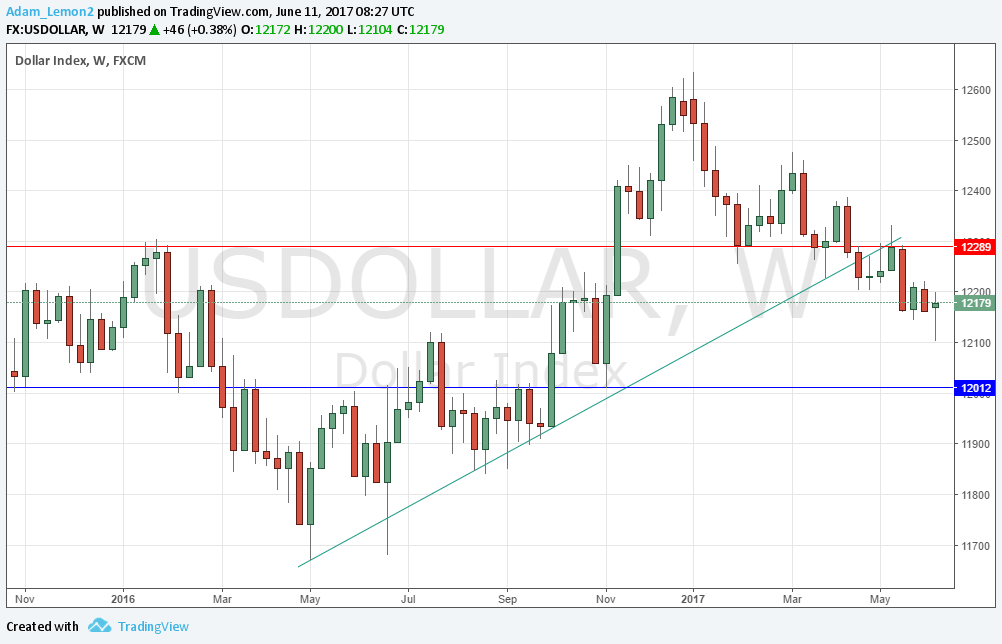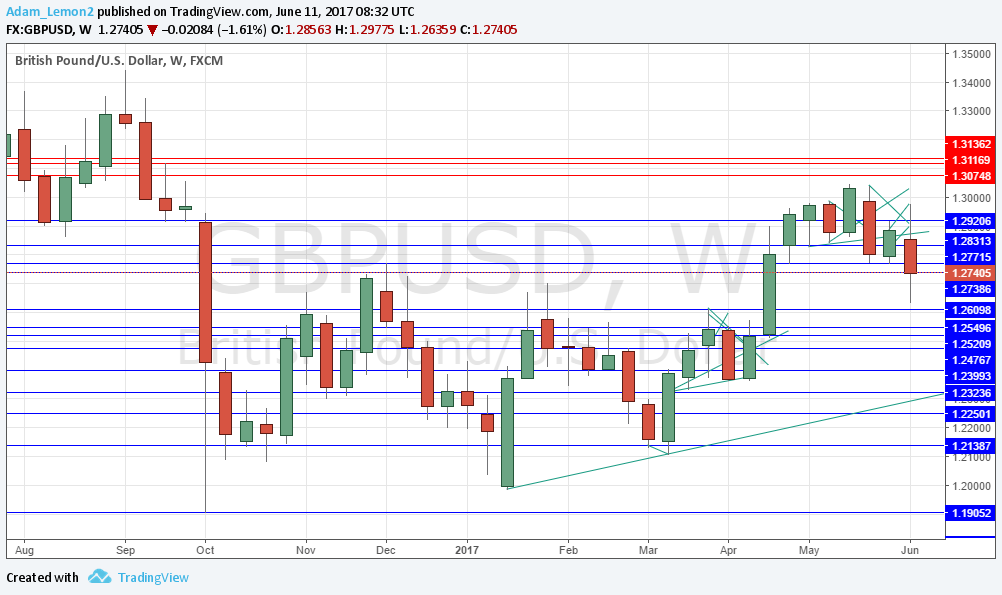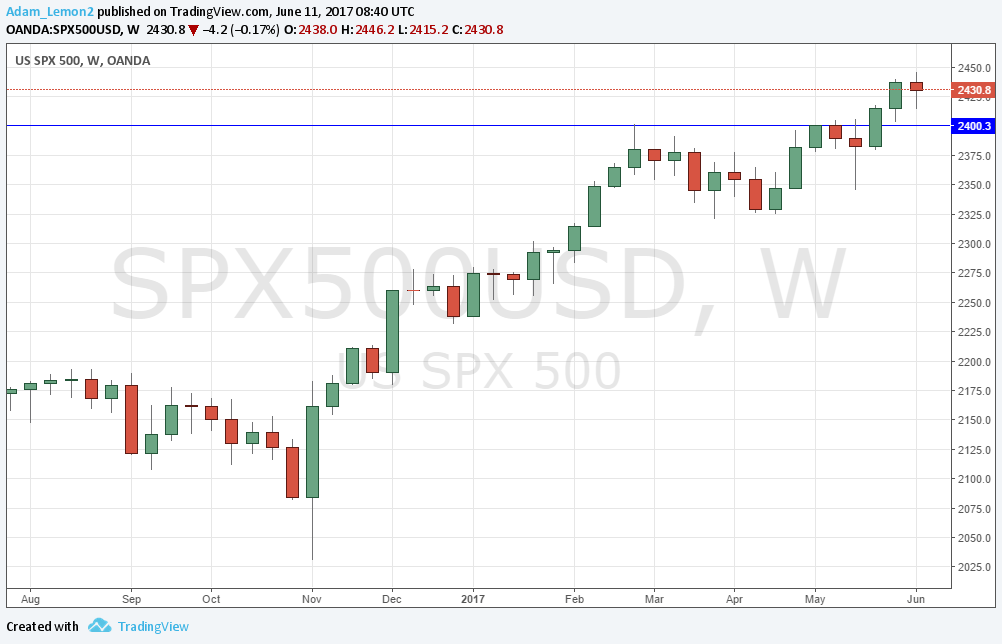The difference between success and failure in Forex trading is very likely to depend upon which currency pairs you choose to trade each week, and not on the exact trading methods you might use to determine trade entries and exits. Each week I am going to analyze fundamentals, sentiment and technical positions in order to determine which currency pairs are most likely to produce the easiest and most profitable trading opportunities over the next week. In some cases it will be trading the trend. In other cases it will be trading support and resistance levels during more ranging markets.
Big Picture 11th June 2017
Last week, I predicted that the best trade for this week was likely to be long the Euro, Gold, the S&P 500 Index, and short of the U.S. Dollar. This was a losing trade, with all pairs falling. EUR/USD is down by 0.25%, Gold is also down, by 0.98%. The S&P 500 Index fell by 0.30%. This combination produced an average loss of 0.51%.
The Forex market is in a less settled mood, with the major movements all against prevailing trends. There are several major inputs due from the central banks of the U.S.A., Japan, the U.K. and Switzerland this week, and a great deal of political uncertainty following the shock result of the British General Election, which has produced an uncertain and potentially fluid outcome. Overall, this week’s outcome looks highly unpredictable.
Fundamental Analysis & Market Sentiment
The major element affecting market sentiment at present are the expectation of a rate hike by the FOMC of 0.25%, which had been assumed but is now in increasing doubt as disappointing U.S. economic data releases and the political difficulties of President Trump call into question whether the environment remains appropriate for a rate rise. Another big item is the result of the British General Election which produced no overall winner and the prospect of a Labour Party led by its hard-left faction coming into power in the near term. Prime Minister May can continue with a very fragile coalition with a minor party from Northern Ireland, but she will almost certainly be forced to resign by her party, and such a fragile coalition is unlikely to last more than 2 or 3 years at most. This is very likely to drag the British Pound down, which will probably also negatively impact the Euro to some extent.
Technical Analysis
USDX
The U.S. Dollar printed a slightly bullish candle this week. It is a near-pin candle of normal size closing not far from its open following an inside candle. The rhythm of the pattern is bearish but the last two candles are hinting at a possible upwards move, although this hint is still only a hint. The bullish trend line is broken and has been rejected bearishly from the broken side, with a resistance level at 12289. The price has broken convincingly below the formerly supportive level at 12203. The price is now below its historic levels from 3 months and 6 months, so has a long-term bearish trend. The signs are mixed.
GBP/USD
The GBP/USD currency pair printed a strongly bearish candle this week. It is a large-sized bearish outside candle, although it closed a long way off its low. Although still technically in a bullish trend, the topping near a key psychological level at 1.3000 and the prospect of political turmoil and the possible accession of a British government led by the far left, make it very likely that this pair will see a continued downward movement towards the 1.2500 area at least.
S&P 500 Index
The major U.S. stock market index fell slightly this week, but not by much. During the week, the price again made a new all-time high. All-time highs should be respected and although a sharp drop in stocks can happen in such a mature bull market, statistics are on the side of the bulls. The technical picture still looks very bullish, although there is an FOMC statement due this week which could cause an unpredictable and strong price movement.
Conclusion
Bullish on the S&P 500 Index; bearish on the British Pound.



